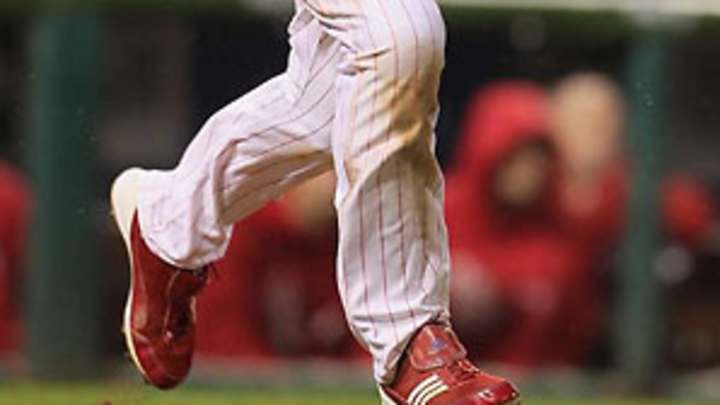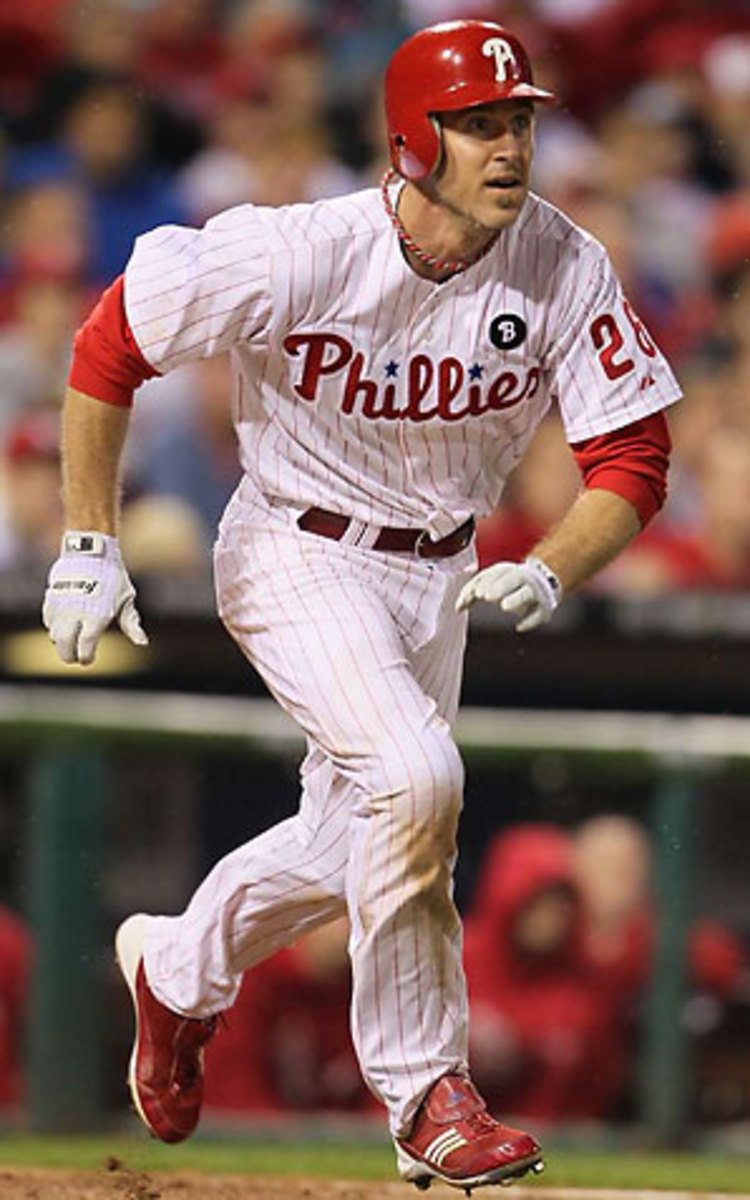With Utley's return, Phillies' chase is on

Chase Utley hasn't played all year but the Phillies need him to perform close to his former All-Star level right away. (Damian Strohmeyer/SI)

If the season ended today, not only would the fourth-place Phillies (36-40) miss the playoffs for the first time since 2006, they would finish with a losing record for the first time since 2002, breaking the National League's longest-running streak of seasons at .500 or above, and finish the year with their lowest NL East finish since 2000. Their manager has mismanaged the team's most expensive offseason acquisition, their roster has been beset by injuries to key players and the pending free agent status of Cole Hamels and Shane Victorino has the vultures circling, poised to strike if the team becomes sellers at the trade deadline. Yet today, the Phillies have good news to share, news that may help prevent most of the aforementioned calamities from happening: second baseman Chase Utley has been activated from the disabled list.
Utley has been on the shelf all season due to patellar chondromalacia in his left knee, the latest in a string of injuries that limited him to just 218 games in 2010 and 2011 and will confine him to his lowest total since his 43-game rookie debut in 2003. His progress this year has been glacial; he didn't play a single game in spring training, didn't play in an extended spring training game until June 4, and didn't start his rehab assignment until June 13. Meanwhile, the Phillies' second basemen have been flailing miserably, exacerbating the team's problems both at the plate and in the field.
Even knowing that Utley had to be considered a health risk based upon his recent history, general manger Ruben Amaro Jr. did little to reinforce the team's depth at the keystone over the winter or during the spring. When it became clear that Utley wouldn't be ready to start the year in the lineup, Philadelphia anointed 22-year-old rookie Freddy Galvis, who batted .278/.324/.392 in 590 PA split between Double-A and Triple-A last year, to be the starter. Galvis started 45 of the team's first 58 games at second base, briefly giving way to utilitymen Pete Orr and Mike Fontenot, and covering shortstop for Jimmy Rollins during the latter's three-game absence. In all, Galvis hit just .226/.254/.363 before going on the disabled list on June 7 due to a fractured vertebra in his back. To make matters worse, commissioner's office announced on June 19 that he had tested positive for a banned performance-enhancing substance, earning him a 50-game suspension. Since then, the hot-hitting Fontenot (.344/.394/.410 in 66 plate appearances) and Michael Martinez have handled the position, with the latter sent down to Triple-A after a 6-for-45 bellyflop.
All told, Philly second basemen have combined to hit .246/.271/.381. Even without Utley or Ryan Howard, who is slated to begin a rehab assignment Thursday after being sidelined due to a ruptured Achilles tendon, the team has scored a respectable 4.34 runs per game, tied for sixth in the NL, and 0.15 runs above the league average. One can argue that Utley's absence has been felt more in the field; the Philles' .682 Defensive Efficiency ranks 14th in the league, eight points below average, and despite the pitching staff's better-than-average strikeout and walk rates, their 4.37 runs per game allowed ranks ninth, 0.09 runs below average.
What can the Phillies realistically expect from the 33-year-old Utley? Over the past two years, he has hit .267/.367/.435, well off his .301/.388/.535 from 2005-2009, a stretch during which he averaged 29 homers and 151 games per year while emerging as the league's best second baseman. In light of his ongoing knee woes, that player probably isn't ever coming back, but even the late model would provide a significant lift. Baseball Prospectus' PECOTA projection system, which doesn't know the nature of his injuries but recognizes his lost playing time, forecasts him for slightly more power (.272/.365/.454) but less defensive value than in recent years. Prorating the PECOTA forecast to a reasonable 300 plate appearances the rest of the way, he'd be worth 2.2 WARP, where Galvis, Fontenot, Orr, and Martinez have been worth a combined −0.6. A three-win improvement from replacement level dreck to a five-time All-Star on the back side of his career is the kind of improvement most teams would kill for in the upcoming summer swap meet.
Kyle Kendrick
